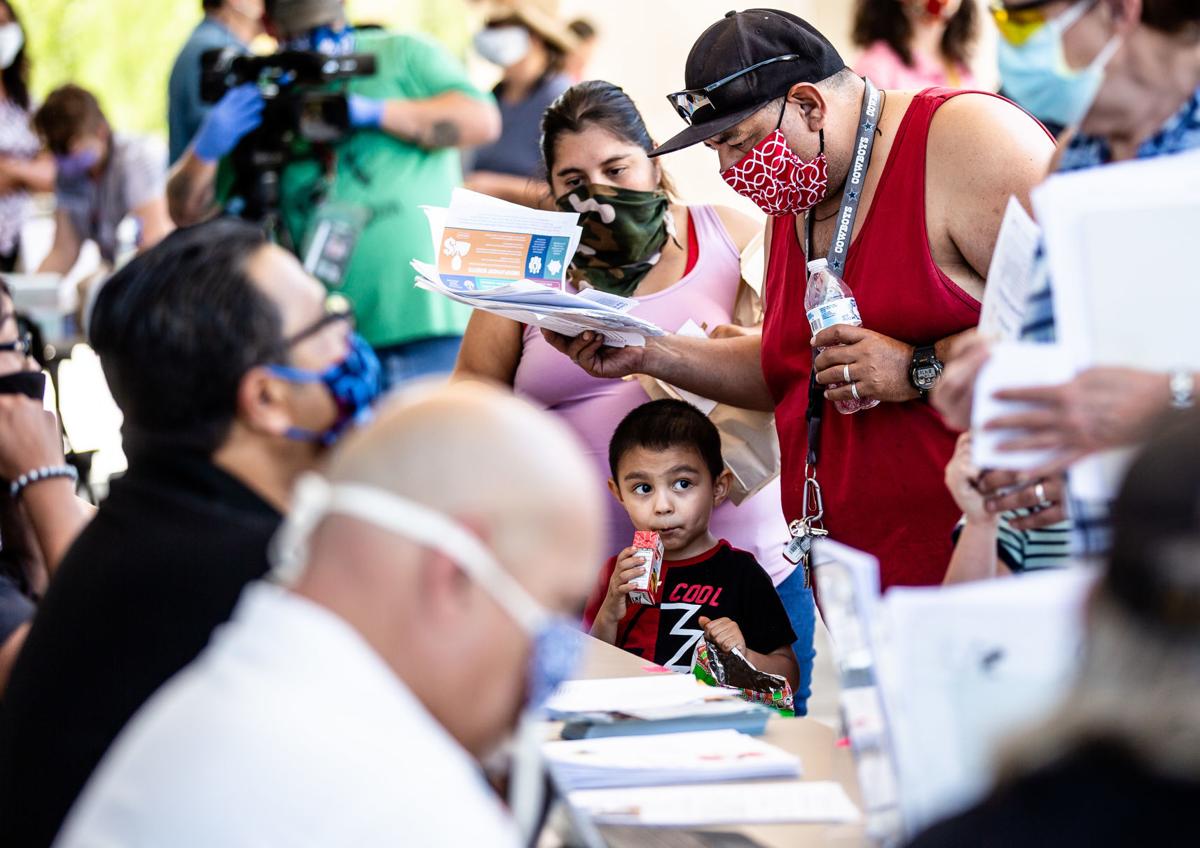The sudden end Thursday to the latest federal eviction moratorium has created some confusion in Pima County about how and when evictions can be carried out.
Landlords who sought an eviction while the moratorium was underway must now ask the court to review the case, at which time the judge may issue a new court order, or “writ,” or schedule another hearing.
On Friday, following a U.S. Supreme Court ruling late Thursday, some writs were reissued without going through that process, said Kristen Randall, lead Pima County constable.
The glitch may be that the court documents only show a writ has been ordered, but not that the tenant was granted a delay due to the moratorium.
Some may have received the new writ from a court clerk who doesn’t understand the Arizona Administrative Office of the Courts guidelines following the end of the moratorium, said Randall, whose office delivers court documents including eviction orders.
“Some of the landlords are either confused about the AOC process of enforcing writs that were held or it looks like some clerks are issuing writs when they shouldn’t have,” she said.
“I’m hoping this won’t be a huge issue. I am hoping we can get it hammered out quickly. I think it’s important the landlords and the tenants know that there’s a process and it needs to be followed.”
The high court ruled that the Biden administration’s latest eviction moratorium due to the pandemic, which was scheduled to expire in October, lacked legal basis.
Government efforts to prevent evictions and reimburse landlords here are still underway and will now be expedited in cases where an eviction is imminent.
Landlords can continue to apply for rental and utility assistance on behalf of their tenants, but households must also take part in the process in order to verify that they meet the income requirements for eligibility. Landlords cannot receive back rent once they evict a tenant.
Eligible households can receive up to 12 months of back rent and up to three months of future rent, or a total of 15 months under the current guidelines. The program can also pay up to 12 months of overdue utility bills.
Pima County, which is partnering with the city of Tucson and the nonprofit Community Investment Corp., has provided assistance in nearly 4,000 local cases, distributing nearly $20 million in rental assistance and more than $1.6 million in utility assistance since March as of Aug. 23.
Another $4 million in payments are approved and immediately pending.
Once this first round of assistance is done, another $26 million will become available.
“We’re doing everything we can to get these funds out as quickly as possible,” said Dan Sullivan, director of Pima County’s Department of Community & Workforce Development.
“We have been working hard to provide additional rental assistance since the beginning of the pandemic and we will continue to do so with urgency.”
There are more than 5,000 cases currently pending. There is a backlog of applicants and it can take weeks for a case to be processed and for payments to go out, Sullivan said. He asks that both tenants and landlords be patient.
Additionally, tenants who qualify can also receive legal assistance in their eviction case.
“Pima County’s new program will connect these tenants with lawyers, at no cost to them, helping level the playing field in court,” said Andy Flagg, deputy director of the county’s Community & Workforce Development Department.
It will also help people at risk of eviction find emergency housing and, in some cases, employment.
About $2 million in funding from the U.S. Housing and Urban Development Emergency Solutions Grants is available to help people facing homelessness due to eviction.
Under guidelines from the Arizona Administrative Office of the Courts, Flagg said if a judgment was handed down during the moratorium, the landlord has to apply for a new writ — and the judge can also require a new hearing if there’s a reason to do so.
Even if the writ gets issued, it cannot be carried out any sooner than five days after the order takes effect.
During those days, Flagg said, his office will work hard to get the rental assistance funding in place to prevent an eviction.
Settlement conferences had not gotten underway but with the lifting of the moratorium, getting those started is a high priority, Flagg said. Seven Superior Court judges have been appointed to hear the settlement conferences.
The last 18 months have “financially decimated” many Arizona property owners, said Courtney Gilstrap LeVinus, president of the Arizona Multihousing Association.
The Supreme Court’s ruling on Thursday is something LeVinus said her members agree with “wholeheartedly.”
Mom-and-pop rental owners and apartment community owners have been pushed to the brink of bankruptcy, she said.
“In Arizona, industry estimates place the amount of unpaid rent at more than $500 million,” she said. “A national survey reports that about one in four single family rental owners has been forced to sell all or some of their properties because of the moratorium.”
Property owners have tried to help residents at risk for eviction, she said. Every dollar owed for rent in Arizona “can be covered by federal assistance,” she said, “provided the resident qualifies and local governments finally disburse the money.”
“We have strongly encouraged our members to keep working with residents to avoid evictions in every possible instance,” she said. “We hope they will continue to do so, as they have for 18 months.”





